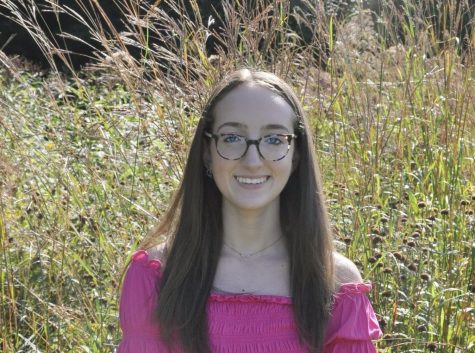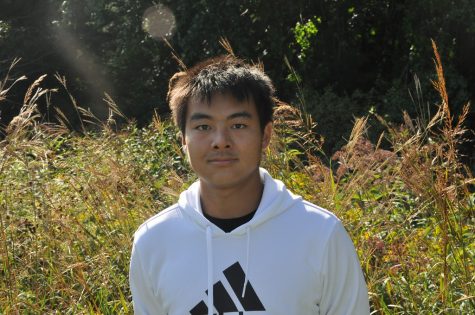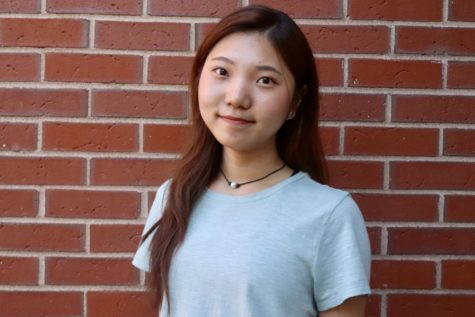BIPOC Wayland: Page to unfold racism in Wayland
Credit: Katherine Kim
An administrative team comprised of people of color who either attends or have attended WHS has recently made an Instagram account for people of color from Wayland to share their stories of racism and to be heard. “It’s important to recognize that [racism] is happening even if it’s not happening to you,” Administrator B said.
September 18, 2020
As racial injustice activism grows throughout the Wayland community, many Instagram accounts have been created for people of color to share their stories as victims of racism on their school campus. On July 2, an anonymous team of administrators created an Instagram account for the Black, Indigenous and people of color in Wayland to share their stories and be heard. As of now, the account has over 79 posts and nearly 1,500 followers, with new stories being added daily.
After being inspired by an Instagram account called “Dear PWI,” or, “Dear Predominately White Institutions,” an anonymous Wayland resident who will go by the name of “Administrator A,” along with a team of multiple other residents were inspired to create the account “BIPOC Wayland.”
“I experienced and witnessed a lot of racial injustice in the Wayland school system,” Administrator A said.
The administrative team that collaboratively works on BIPOC Wayland is made up of people of color who either attend or have attended the Wayland Public Schools. Another administrator, “C”, is glad that now, there is a place where Wayland’s people of color can share their experience of racism without the fear of being judged.
“I feel like in a town that’s predominately white, it’s really hard to share your experiences with your friends because, for me at least, almost all my friends are white,” Administrator C said. “I’m not as comfortable sharing my experiences with them because I’m not really sure how they’ll react.”
According to this 2018 study, 84.7% of Wayland’s population is white. For this reason, the administrators of the account feel as though the residents of Wayland are isolated in a sort of “bubble” from the diversity of other towns. For instance, Framingham’s percentage of people who are white is considerably lower, at 71.4%.
“When we were younger, there was just this idea that teachers and principals emphasized: we’re in Wayland,” Administrator C said. “We’re in this perfect and happy place. We’re in this bubble of happiness and niceness, and everything is perfect, so that’s what I grew up believing.”
It is not just the predominately white society of Wayland that keeps students from confiding in their white friends. Many people of color don’t believe that their white friends can truly relate to the racism that they deal with.
“When people say, ‘I understand what you’re going through,’ they don’t understand,” one of the other administrators, “B” said. “They can stand with us through this, but [they’ll] never understand what we go through.”
Administrator A asserts that racism is still happening in Wayland if on a smaller scale, contrary to many beliefs that there isn’t any.
“I think this account is important because I think that a lot of people assume that [racial injustice] doesn’t occur in Wayland,” Administrator A said. “I think the racism in Wayland is a different form of racism, one that’s less overt but still bad.”
Junior Jenna Garber realized the existence of racism in Wayland through the Wayland BIPOC Instagram page. Garber is thankful that she can attempt to “escape the bubble” by reading, understanding and diversifying her perspective on racism in Wayland.
“As a white girl with primarily white friends, I was definitely oblivious to the blatant racism that was happening at our school,” Garber said. “I always knew racism existed, but the stories I have been reading from the BIPOC Instagram page really put into perspective how active racism is in my community.”
One of the account’s biggest motivations and goals is raising awareness in a wide range of age.
“One thing that I’m really happy about is that this account isn’t only for high schoolers,” Administrator C said. “I’ve seen so many middle schoolers realize [that racism exists] and become more aware [of] what’s wrong with society in general and what they can do to become better.”
Many students who suffer from racism often hide their feelings and pretend to be indifferent to their classmates’ remarks. Although these people hide it, the racist comments of their peers still affects them and changes them as individuals.
For a great deal of students who have bottled up their emotions and feelings following a racist remark or occurrence, the Wayland BIPOC Instagram page serves as a haven for students to release any negative emotions that they might have been holding on to.
“Just having the place for people to share their stories [is important],” Administrator C said. “It’s a way to vent and just let your story go. It’s a way to release any anger or sadness that is built inside of you.”
Going forward, the administrators hope that the account will continue to grow and inspire people through posts about the racism that students experience.
“It’s important to recognize that [racism] is happening even if it’s not happening to you,” Administrator B said.





![Last Wednesday, the Wayland School Committee gathered to discuss a number of topics regarding the health curriculum and Innovation Career Pathway course. Another large topic of conversation was the ways to potentially mitigate distracting cell phone usage. "These [phones] are going to distract your learning and social relationships," Superintendent David Fleishman said. "That's concrete right there."](https://waylandstudentpress.com/wp-content/uploads/2025/06/Screenshot-2025-06-04-at-9.49.31 PM-1200x886.png)



























![Troy Hoyt finishes the Boston Marathon, running for the Hoyt Foundation. T. Hoyt is the son of Hoyt Foundation CEO Russ Hoyt.
“[Running a marathon] might seem like a big thing, when it’s presented to you at first, but if you break it up and just keep telling yourself, “Yes, you can,” you can start chipping away at it. And before you know it, you’ll be running the whole 26 miles, and you won’t even think twice about it.” T. Hoyt said.](https://waylandstudentpress.com/wp-content/uploads/2025/04/C36E8761-1CBB-452E-9DF2-543EF7B1095E_1_105_c.jpeg)











































![An administrative team comprised of people of color who either attends or have attended WHS has recently made an Instagram account for people of color from Wayland to share their stories of racism and to be heard. “It’s important to recognize that [racism] is happening even if it’s not happening to you,” Administrator B said.](https://waylandstudentpress.com/wp-content/uploads/2020/09/mAhFw7cqfoeZoBlwbW2DUE606N4j7Ro94wXCVB0S-900x600.jpeg)




Disappointed in WSPN • Sep 20, 2020 at 11:56 AM
It’s very telling that the only person interviewed for this article besides the administrators was a white person talking about how this has opened their eyes, even though the account’s mission is clearly stated as being a safe place for POC in Wayland to share their experiences. Why weren’t any POC interviewed to talk about what this platform means to them? As always, talk about race in Wayland is always tailored to the white student’s thoughts and needs.
Jonathan Zhang • Sep 23, 2020 at 12:51 PM
Thank you for your concern; however, the intent of this article was to speak with the anonymous administrators of the Instagram account, who are all people of color and dig deeper into why they felt that it was so important that this account be created. We interviewed one white student to see how this account has changed their perspective after reading the stories shared on the account. There is an article coming out in the future focused on the people of color in Wayland and how they feel about the account, that just wasn’t the focus of this piece, but do stay posted for that!
– Jonathan Zhang